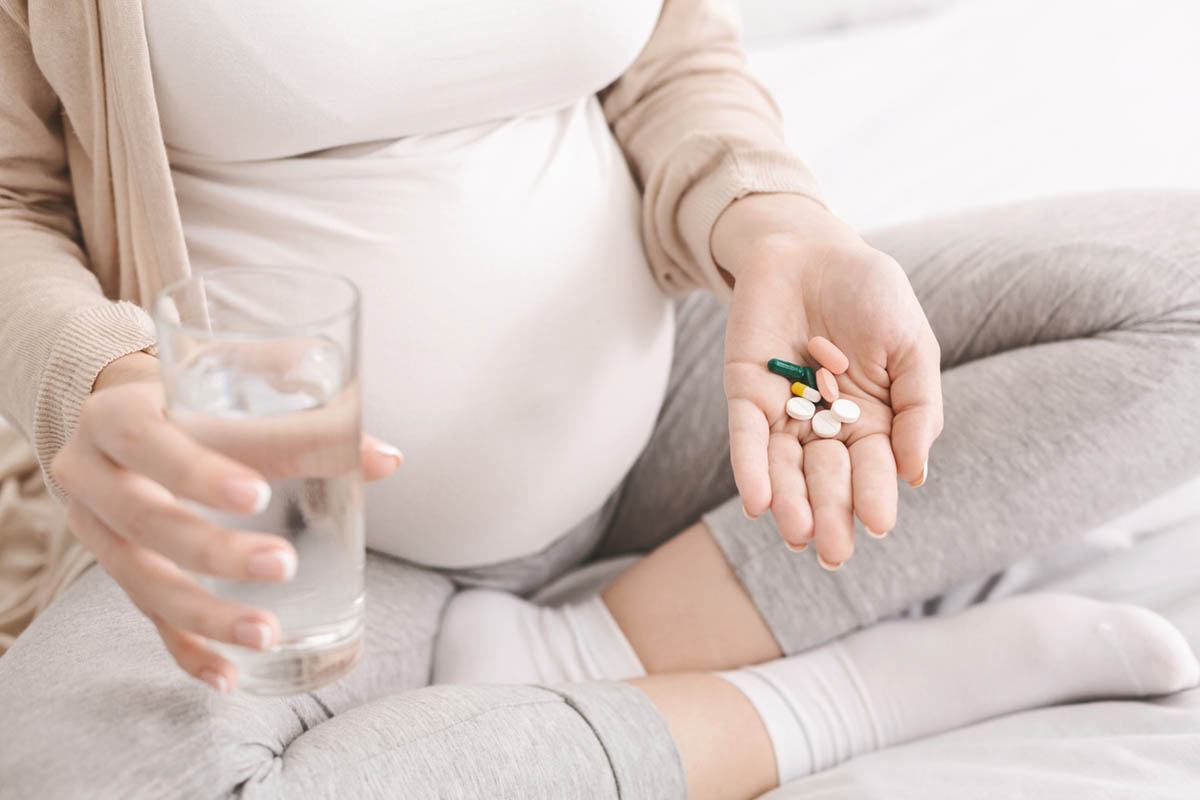aMassachusetts General Hospital Clinical Trials Network and Institute, Boston, Massachusetts
bDepartments of Psychiatry and Family Medicine, University of Tennessee College of Medicine, Memphis, Tennessee
cDepartment of Psychiatry, Northwestern University, Feinberg School of Medicine, Chicago, Illinois
dUniversity of Texas Southwestern Medical Center, Dallas, Texas
*Corresponding author: George I. Papakostas, MD, Massachusetts General Hospital, Harvard Medical School, 15 Parkman St WACC#812, Boston, MA 02114 ([email protected]).
J Clin Psychiatry 2020;81(3):OT19037COM5
To cite: Papakostas GI, Jackson WC, Rafeyan R, et al. Inadequate response to antidepressant treatment in major depressive disorder. J Clin Psychiatry. 2020;81(3):OT19037COM5.
To share: https://doi.org/10.4088/JCP.OT19037COM5
© Copyright 2020 Physicians Postgraduate Press, Inc.
This Commentary presents highlights of the roundtable meeting “Inadequate Response to Antidepressant Treatment in Major Depressive Disorder,” which was held October 5, 2019, in San Diego, California. The panel of experts presented on and then discussed topics relevant to inadequate response, including how to determine where patients are on the response continuum and how to manage patients with inadequate response. Their presentations are summarized here. To learn more about inadequate response to antidepressants in MDD, read free 4 eReports also based on the roundtable discussion:
- Implementing Measurement-Based Care to Determine and Treat Inadequate Response
- Recognizing Inadequate Response in Patients With Major Depressive Disorder
- Inadequate Response to Treatment in Major Depressive Disorder: Augmentation and Adjunctive Strategies
- Overcoming Challenges to Treat Inadequate Response in Major Depressive Disorder
Many patients treated for major depressive disorder (MDD) experience relatively modest rates of response and remission despite the large number of antidepressant (AD) medications available. Side effects can hinder treatment adherence, while residual symptoms can contribute to increased functional impairment, morbidity, and mortality.1 Clinicians should feel a sense of urgency to help patients who have inadequate response to initial treatment, especially since people with MDD have reduced life expectancy compared to those without MDD.2 Lack of remission is also associated with an increased risk of relapse and recurrence, higher use of health care resources, higher rates of chronicity, and decreased quality of life. Therefore, distinguishing response from remission has clinical significance and requires systematic monitoring of the presence and severity of depressive symptoms.3
Recognizing Inadequate Response in Patients With Major Depressive Disorder
First, Dr Jackson presented on the importance of recognizing levels of response, residual symptoms, and factors that impact response.
Defining inadequate response. Nonresponders are patients who show little to no improvement in depressive symptoms, typically less than 25% improvement on a depression rating scale.1 Partial responders, or patients with inadequate response, show some improvement in symptoms, between 25% and 49% on a rating scale, but still have troublesome symptoms that negatively impact their functioning.1 Responders are patients with 50% improvement or more, but they still have not achieved remission and may require treatment for residual symptoms.1 Patients who achieve remission are virtually symptom-free4 and can return to normal functioning.
In contrast to patients with inadequate response, patients with treatment-resistant depression (TRD) are characterized by a longer treatment history during the current episode, such as 2 or more treatment trial failures,5 and often exhibit a sense of discouragement or hopelessness.
Recognizing residual symptoms. Patients who achieve response and even remission often struggle with residual symptoms, including low mood, anxiety, irritability, and guilt. In terms of functional impact, patients may show lack of interest and work impairment. Cognition can be an issue, including impaired memory and increased cognitive reactivity. Common somatic symptoms include reduced libido, insomnia, fatigue, and pain.6
Contributing factors. Multiple factors may contribute to failure of initial AD therapy, including an inadequate AD dose or trial duration, treatment nonadherence, and misdiagnosis. Poor adherence to prescribed treatment along with poor tolerability are factors that often contribute to treatment nonresponse in MDD.7 Clinicians can improve adherence by providing patient education and consistent follow-up to strengthen the therapeutic alliance.8 What patients think about treatment also matters, because preference predicts both therapeutic alliance and adherence in treatment for MDD. Finally, clinicians must be aware that poor response may be the result of a misdiagnosis of bipolar disorder or MDD with mixed features.
Implementing Measurement-Based Care to Determine and Treat Inadequate Response
Next, Dr Trivedi outlined the importance of using measurement-based care (MBC) to improve outcomes for patients with inadequate response. Response is generally defined as a 50% decrease in symptoms from baseline on a depression severity rating scale.9 Rating scales are used to measure this change because it is difficult to determine the percentage of improvement without comparison to a baseline score. Remission is a predefined cutoff score on a depression rating scale, such as a Patient Health Questionnaire (PHQ-9) score of less than 5.9 Remission should be the goal of MDD treatment because of its implications for better prognosis and function in patients than in those who achieve response.9
Although MBC has proven more effective than usual care in helping patients achieve both response and remission, it has not been adopted as standard practice. MBC uses the results from symptom rating scales to drive clinical decision making for individual patients.10 For example, rating scales provide data to help clinicians recognize when treatment has failed, consider strategies to improve partial response, or continue successful treatment. Implementing these measures is important because in their absence, patients may be left for months or even years with inefficient or inadequate treatment.
In addition to measuring core depressive symptoms, clinicians may need to add other itemized rating instruments to measure treatment adherence or additional symptoms, such as suicidality or irritability. Ultimately, patients are less focused on symptom improvement than are clinicians and tend to look for improvement in their function, quality of life, and work productivity. Self-report measures, such as the World Health Organization 5-item Well-Being Index,11 are available to see how patients with MDD are doing at work and feeling overall.
Inadequate Response to Treatment in Major Depressive Disorder: Augmentation and Adjunctive Strategies
Dr Rafeyan reviewed the evidence for current treatment strategies for inadequate response in MDD. These strategies include switching ADs, combining ADs, optimizing the AD dose, and augmenting the current AD.12,13 In many cases, augmentation strategies can accelerate response to AD therapy and alleviate troublesome symptoms faster than several different AD monotherapy trials.
Among adjunctive treatments used on an off-label basis in MDD, the trials of augmentation of ADs with buspirone and methylphenidate did not show statistical significance,12 but modafinil may help patients experiencing sleepiness or fatigue.14 Positive placebo-controlled studies of lithium12,15 and thyroid7,16 augmentation, mostly with tricyclic ADs, were identified, although results are inconsistent.
Atypical antipsychotics show significantly higher response rates compared to AD alone, and augmentation can have a significant effect on symptoms and improvement.12,13 The 4 atypical antipsychotics to receive US Food and Drug Administration (FDA) approval as augmentation for the treatment of MDD are aripiprazole, quetiapine extended release, olanzapine plus fluoxetine combination, and brexpiprazole.17 Other atypical antipsychotics have had mixed results in MDD and remain off-label for their use as augmenting agents to AD treatment.17 Clinicians must monitor side effects and provide education to patients about the benefits and risks of these agents in order to improve adherence.
Overcoming Challenges to Treat Inadequate Response in Major Depressive Disorder
Dr Papakostas summarized key points from the meeting and addressed common challenges in the treatment of inadequate response. He noted a broadening of the types of treatments available for MDD. Traditional AD monotherapies are often used sequentially, but the STAR*D study showed that the outcomes for more than 2 subsequent AD trials are diminished.18,19 For patients with inadequate response, adjunctive treatment strategies include atypical antipsychotics, lithium, and thyroid hormone.20 For patients with TRD, treatments include neurostimulation therapies (eg, electroconvulsive therapy, transcranial magnetic stimulation) and esketamine.21-23
Although the atypical antipsychotics were developed 10 years ago, they may be underutilized, with many clinicians more likely to switch agents than to augment.24 Meta-analyses show that adjunctive antipsychotics are significantly more effective than placebo for response and remission, even with no response to initial AD.25 However, clinicians must monitor side effects.13 Other adjunctive strategies for patients with inadequate response to AD treatment include l-methylfolate and SAMe,26,27 exercise,28 and psychotherapy.20
The challenge for the clinician is figuring out which of these available treatments to use based on their patients’ response to current and past therapies, symptom severity, and preference. Current guidelines offer a big-picture view of treating partial response and nonresponse using strategies such as optimizing the dose, switching to a different AD, changing to or augmenting with psychotherapy, adding adjunctive therapy, or considering neurostimulation or esketamine.20,29
While guidelines can provide a good synthesis of the evidence of the literature, they do not have the same level of detail as treatment algorithms, nor do they capture the differences between inadequate response and TRD or take into account new and emerging treatments. Clinicians can keep up with the literature on novel treatments through other sources, such as peer-reviewed journals and CME programs, which can be updated more frequently than treatment guidelines.
Conclusion
Clinicians face many challenges in the treatment of patients with MDD who experience inadequate response to ADs, but MBC can improve outcomes through the use of regular assessment, patient education, and critical decision points. Antidepressant treatment options are more varied than ever, requiring clinicians to keep up with the evidence for new and emerging treatments. Evidence suggests that adjunctive therapies, such as the FDA-approved atypical antipsychotics, are more efficacious than switching ADs when the initial treatment is well tolerated but is not significantly improving symptoms. Clinicians should also be familiar with the available options for psychotherapy, supplements, and exercise for patients who prefer alternative therapies.
Published online: May 19, 2020.
Potential conflicts of interest: Dr Papakostas has been a consultant for AlphaSigma, Cala Health, Alkermes, Johnson & Johnson, and Otsuka and has received honoraria from Acadia, AlphaSigma, Alkermes, and Hypera S.A. Dr Jackson has been a consultant and speakers/advisory board member for and received honoraria from Allergan, Genentech, Otsuka, and Sunovion. Dr Rafeyan has received grant/research support from Eli Lilly, Sepracor, and Janssen and has been a speakers/advisory board member for AstraZeneca, Allergan, Alkermes, Eli Lilly, Janssen, Intra Cellular Therapies, Pfizer, Abbott, Otsuka, Lundbeck, Takeda, Teva, and Sunovion. Dr Trivedi has been a consultant or advisory board member for Allergan, Alto Neuroscience, Applied Clinical Intelligence, Axsome Therapeutics, Boehringer Ingelheim, Engage Health Media, GreenLight VitalSign6, Janssen, Lundbeck Research USA, Navitor, Otsuka, Perception Neuroscience, Pharmerit International, SAGE Therapeutics, and Signant Health; has received grant/research support from the National Institute of Mental Health, National Institute on Drug Abuse, Patient-Centered Outcomes Research Institute, and Cancer Prevention Research Institute of Texas; and has received editorial compensation from the American Psychiatric Association (Deputy Editor, American Journal of Psychiatry) and Oxford University Press.
Funding/support: Financial support for preparation and dissemination of this commentary was provided by Otsuka Pharmaceutical Development & Commercialization, Inc., and Lundbeck, Inc.
Disclaimer: This evidence-based peer-reviewed commentary was prepared by Healthcare Global Village, Inc. The opinions expressed herein are those of the faculty and do not necessarily reflect the views of Healthcare Global Village, Inc., the publisher, or the commercial supporters. This article is distributed by Otsuka Pharmaceutical Development & Commercialization, Inc., and Lundbeck, Inc., for educational purposes only.
Acknowledgment: The faculty acknowledge Evonne Krell for editorial assistance in developing the manuscript.
REFERENCES
1. Papakostas GI. Identifying patients who require a change in depression treatment and implementing that change. J Clin Psychiatry. 2016;77(suppl 1):16-21.
2. Jia H, Zack MM, Thompson WW, et al. Impact of depression on quality-adjusted life expectancy (QALE) directly as well as indirectly through suicide. Soc Psychiatry Psychiatr Epidemiol. 2015;50(6):939-949. PubMed CrossRef
3. McIntyre R, Kennedy S, Bagby RM, et al. Assessing full remission. J Psychiatry Neurosci. 2002;27(4):235-239. PubMed
4. Trivedi MH, Hollander E, Nutt D, et al. Clinical evidence and potential neurobiological underpinnings of unresolved symptoms of depression. J Clin Psychiatry. 2008;69(2):246-258. PubMed CrossRef
5. Gaynes BN, Asher G, Hoffman V, et al. Definition of Treatment-Resistant Depression in the Medicare Population [Internet]. Rockville, MD: Agency for Healthcare Research and Quality (US); 2018.
6. Israel JA. The impact of residual symptoms in major depression. Pharmaceuticals (Basel). 2010;3(8):2426-2440. PubMed CrossRef
7. Papakostas GI. Managing partial response or nonresponse: switching, augmentation, and combination strategies for major depressive disorder. J Clin Psychiatry. 2009;70(suppl 6):16-25. PubMed CrossRef
8. Sansone RA, Sansone LA. Antidepressant adherence: are patients taking their medications? Innov Clin Neurosci. 2012;9(5-6):41-46. PubMed
9. Rush AJ, Kraemer HC, Sackeim HA, et al; ACNP Task Force. Report by the ACNP Task Force on response and remission in major depressive disorder. Neuropsychopharmacology. 2006;31(9):1841-1853. PubMed CrossRef
10. Aboraya A, Nasrallah HA. It’s time to implement measurement-based care in psychiatric practice. Curr Psychiatr. 2019;18(6):6-8.
11. Topp CW, Østergaard SD, Søndergaard S, et al. The WHO-5 Well-Being Index: a systematic review of the literature. Psychother Psychosom. 2015;84(3):167–176. PubMed CrossRef
12.Fleurence R, Williamson R, Jing Y, et al. A systematic review of augmentation strategies for patients with major depressive disorder. Psychopharmacol Bull. 2009;42(3):57-90. PubMed
13.Philip NS, Carpenter LL, Tyrka AR, et al. Pharmacologic approaches to treatment resistant depression: a re-examination for the modern era. Expert Opin Pharmacother. 2010;11(5):709-722. PubMed CrossRef
14.Fava M, Thase ME, DeBattista C, et al. Modafinil augmentation of selective serotonin reuptake inhibitor therapy in MDD partial responders with persistent fatigue and sleepiness. Ann Clin Psychiatry. 2007;19(3):153-159. PubMed CrossRef
15.Bauer M, Adli M, Bschor T, et al. Lithium’s emerging role in the treatment of refractory major depressive episodes: augmentation of antidepressants. Neuropsychobiology. 2010;62(1):36-42. PubMed CrossRef
16.Joffe RT, Singer W, Levitt AJ, et al. A placebo-controlled comparison of lithium and triiodothyronine augmentation of tricyclic antidepressants in unipolar refractory depression. Arch Gen Psychiatry. 1993;50(5):387-393. PubMed CrossRef
17.Wang S-M, Han C, Lee S-J, et al. Second generation antipsychotics in the treatment of major depressive disorder: an update. Chonnam Med J. 2016;52(3):159-172. PubMed CrossRef
18.Rush AJ, Trivedi MH, Wisniewski SR, et al. Acute and longer-term outcomes in depressed outpatients requiring one or several treatment steps: a STAR*D report. Am J Psychiatry. 2006;163(11):1905-1917. PubMed CrossRef
19.Gaynes BN, Warden D, Trivedi MH, et al. What did STAR*D teach us? results from a large-scale, practical, clinical trial for patients with depression. Psychiatr Serv. 2009;60(11):1439-1445. PubMed CrossRef
20.Gelenberg AJ, Freeman MP, Markowitz JC, et al; Work Group on Major Depressive Disorder. Practice Guideline for the Treatment of Patients With Major Depressive Disorder. 3rd ed. Arlington, VA: American Psychiatric Association; 2010.
21.Al-Harbi KS, Qureshi NA. Neuromodulation therapies and treatment-resistant depression. Med Devices (Auckl). 2012;5:53-65. PubMed
22.Milev RV, Giacobbe P, Kennedy SH, et al; CANMAT Depression Work Group. Canadian Network for Mood and Anxiety Treatments (CANMAT) 2016 Clinical Guidelines for the Management of Adults with Major Depressive Disorder, section 4: neurostimulation treatments. Can J Psychiatry. 2016;61(9):561-575. PubMed CrossRef
23.Bahr R, Lopez A, Rey JA. Intranasal esketamine (Spravato) for use in treatment-resistant depression in conjunction with an oral antidepressant. P T. 2019;44(6):340-375. PubMed
24.Barowsky J, Schwartz TL. An evidence-based approach to augmentation and combination strategies for treatment-resistant depression. Psychiatry (Edgmont). 2006;3(7):42-61. PubMed
25.Nelson JC, Papakostas GI. Atypical antipsychotic augmentation in major depressive disorder: a meta-analysis of placebo-controlled randomized trials. Am J Psychiatry. 2009;166(9):980-991. PubMed CrossRef
26.Papakostas GI, Mischoulon D, Shyu I, et al. S-adenosyl methionine (SAMe) augmentation of serotonin reuptake inhibitors for antidepressant nonresponders with major depressive disorder: a double-blind, randomized clinical trial. Am J Psychiatry. 2010;167(8):942-948. PubMed CrossRef
27.Papakostas GI, Shelton RC, Zajecka JM, et al. L-methylfolate as adjunctive therapy for SSRI-resistant major depression: results of two randomized, double-blind, parallel-sequential trials. Am J Psychiatry. 2012;169(12):1267-1274. PubMed CrossRef
28.Trivedi MH, Greer TL, Church TS, et al. Exercise as an augmentation treatment for nonremitted major depressive disorder: a randomized, parallel dose comparison. J Clin Psychiatry. 2011;72(5):677-684. PubMed CrossRef
29.Kennedy SH, Lam RW, McIntyre RS, et al; CANMAT Depression Work Group. Canadian Network for Mood and Anxiety Treatments (CANMAT) 2016 Clinical Guidelines for the Management of Adults with Major Depressive Disorder, section 3: pharmacological treatments. Can J Psychiatry. 2016;61(9):540-560. PubMed CrossRef
This PDF is free for all visitors!





